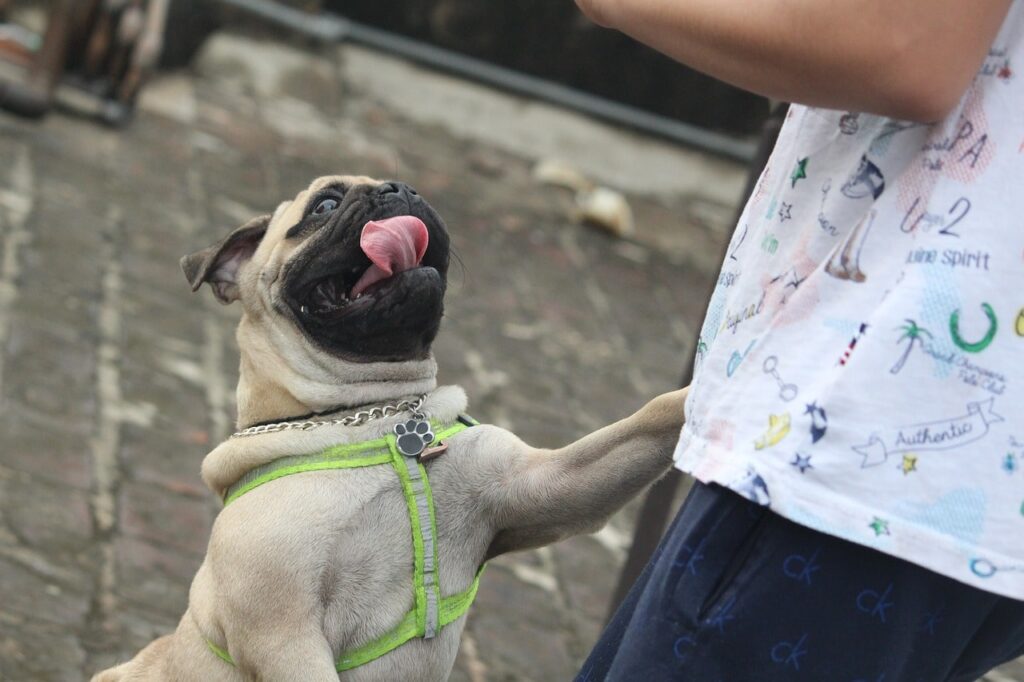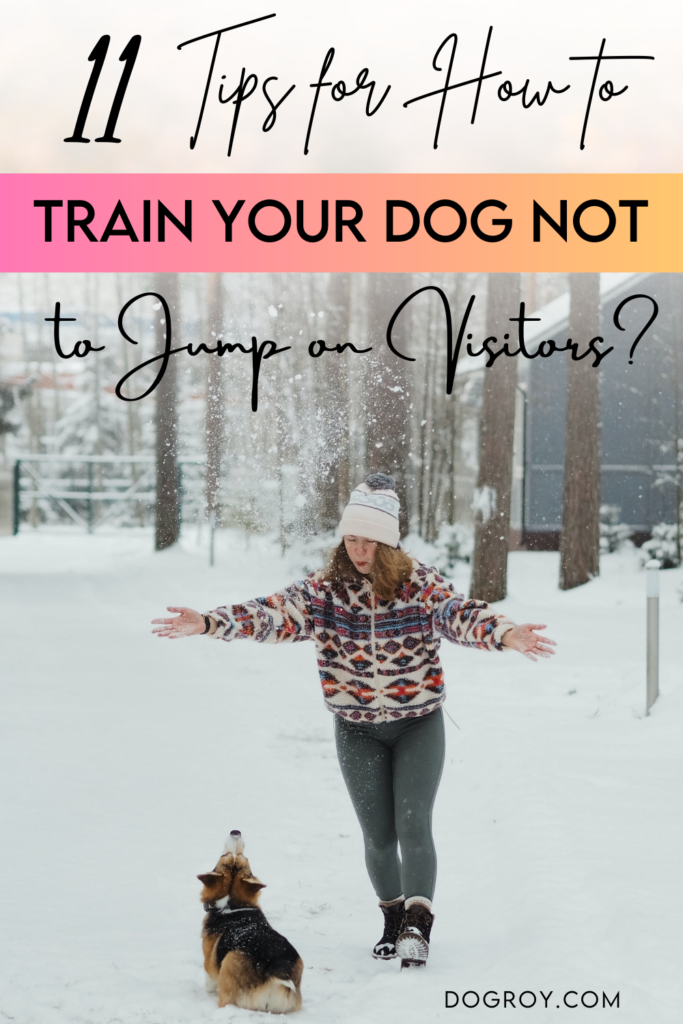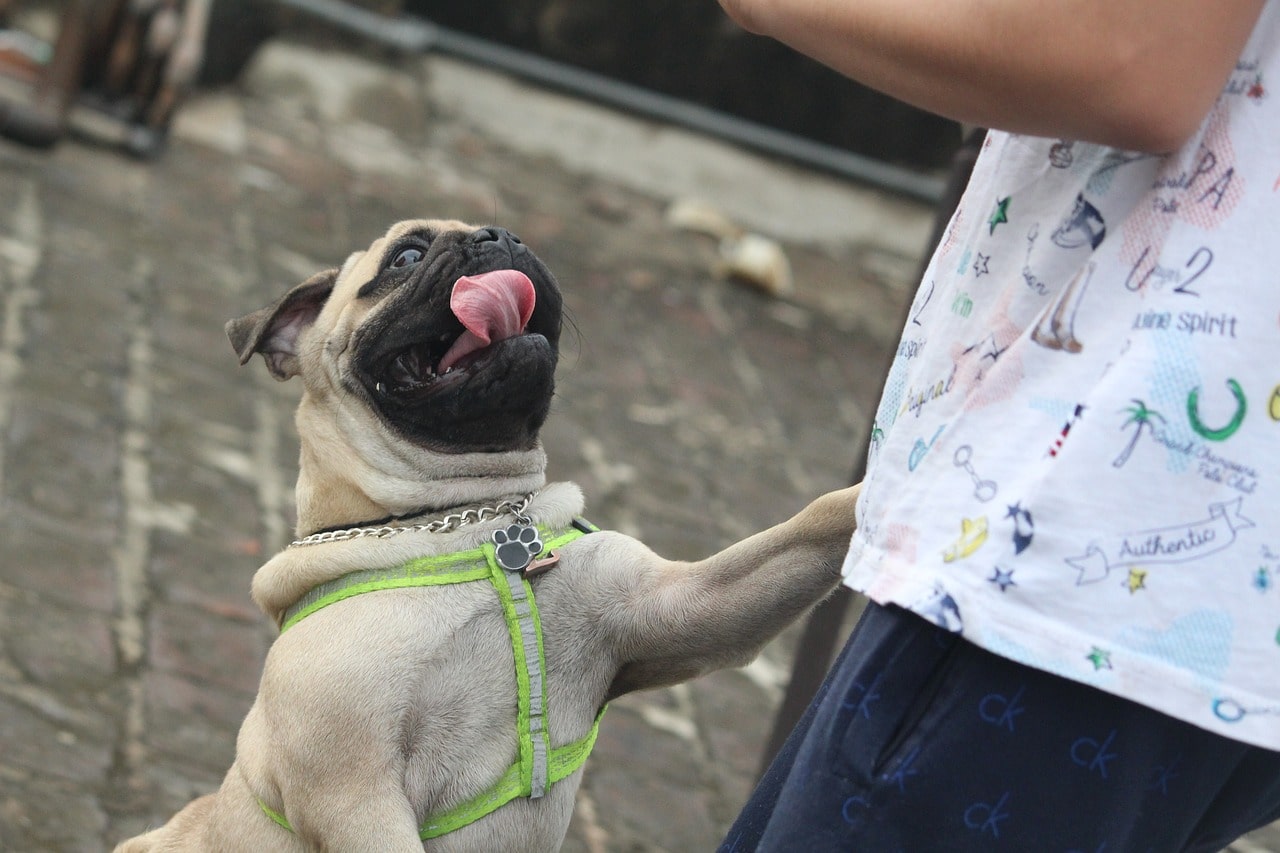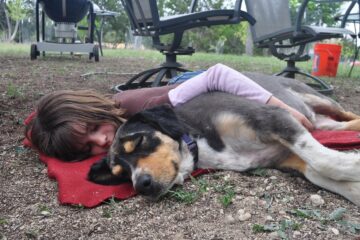A dog’s enthusiastic greeting can be heartwarming, but excessive jumping can make it less enjoyable for both pet parents and guests.
In this guide, we’ll explore effective strategies and expert tips on how to train your dog not to jump on visitors.
From understanding the reasons behind this behavior to implementing positive reinforcement techniques, let’s embark on a journey to create a well-mannered and welcoming environment for your canine companion and your guests.
Table of Contents
A Guide on How to Train Your Dog Not to Jump on Visitors: Polite Pooches

1] Consistent Commands
Establishing consistent commands is like teaching your dog a universal language.
Beyond “sit” and “stay,” introduce commands like “down” or “wait.”
Practice these commands in different environments, ensuring your dog understands them in various scenarios.
Consistency is key – use the same commands every time to avoid confusion.
Think of it as building a dictionary of good manners for your furry friend.
2] Positive Reinforcement
Positive reinforcement is the golden ticket to good behavior.
When your dog remains calm during greetings, reward them immediately.
Experiment with various rewards – it could be treats, verbal praise, or a favorite toy.
The key is to make the reward immediate and exciting.
This method not only reinforces calm behavior but also strengthens the bond between you and your pup.
3] Pre-Greeting Routine
Your dog is like a master performer awaiting their cue.
Establish a pre-greeting routine that sets the stage for well-mannered interactions.
This routine might include asking your dog to sit or stay before the door opens.
Consistent practice ensures your dog associates this routine with calm behavior, creating a positive anticipation before every greeting scenario.
4] Ignore and Redirect
Unwanted jumping is like a clumsy dance move at a fancy ball.
When your dog jumps, practice the art of ignoring.
Turn away, avoid eye contact, and withhold attention until they settle.
Once calm, shower them with positive attention.
This strategy teaches your dog that calmness brings connection, while jumping leads to a moment of social disapproval.
5] Leash Training
Think of a leash as your communication tool during greetings.
Begin with on-leash introductions to maintain control.
Ask your dog to sit before meeting guests.
Gradually transition to off-leash greetings as they master calm interactions.
Leash training becomes a language of calmness, allowing your dog to express excitement in a controlled and polite manner.
Leash training is a valuable tool to manage your dog’s enthusiasm, providing a controlled environment for polite interactions
6] Visitor Simulation
Turn your living room into a training ground with simulated greetings.
Enlist friends or family to play the role of guests.
Practice commands, reinforce positive behavior, and simulate various scenarios.
This controlled practice builds your dog’s confidence, ensuring they’re prepared for real-life interactions.
It’s like rehearsing a script for the grand stage of socializing.
7] Doorway Etiquette
Your front door becomes the gateway to polite interactions.
Teach your dog to sit or stay when someone approaches.
Consistent training transforms the doorway into a realm of politeness.
This etiquette sets the tone for the entire encounter, creating a calm and well-behaved atmosphere right from the entrance.
8] Professional Training Classes
Elevate your training journey with the expertise of certified trainers.
Enrolling in professional training classes provides personalized guidance.
Trainers assess your dog’s behavior, offer tailored strategies, and provide hands-on training in a controlled environment.
It’s like having a personal coach for your dog, ensuring their manners reach the pinnacle of politeness.
9] Use Pet-Friendly Mats
Pet-friendly mats serve as the welcome mat to polite interactions.
Place them near the entrance to encourage your dog to stay grounded during greetings.
These mats provide a comfortable and designated space for your dog to wait calmly as guests arrive.
Think of it as offering your dog a special spot to showcase their best manners.
Did you know that there are over 300 words for love in canine?
– Gabriel Zevin (author, Margarettown)
10] Teach an Alternative Greeting Behavior
Spice up greetings by introducing an alternative behavior.
Teach your dog to offer a paw or a high-five instead of jumping.
Redirect their enthusiasm into a controlled action, adding a touch of flair to their greeting style.
This alternative becomes a delightful and well-mannered way for your dog to express their excitement.
11] Routine Socialization
Transform your dog into a social butterfly through routine socialization.
Expose them to various people, scents, and environments.
Regular socialization builds confidence and reduces the likelihood of overexcitement during greetings.
It’s like broadening your dog’s social horizons, ensuring they navigate diverse interactions with grace and ease.
How to Train Your Dog Not to Jump on Visitors: FAQs
How long does it take to train a dog not to jump on visitors?
Training timelines vary, but consistent efforts can yield positive results within a few weeks. Patience and repetition are essential components of successful training.
Can all dogs be trained not to jump?
Yes, all dogs can be trained not to jump with the right techniques and consistent training. The effectiveness of training may vary based on the dog’s age, temperament, and previous experiences.
Should I discourage jumping altogether?
While jumping is a natural behavior for dogs, discouraging excessive jumping ensures a more controlled and polite interaction with visitors. Teaching alternative behaviors like sitting or staying is beneficial.
Is professional training necessary for addressing jumping behavior?
While pet owners can achieve success through consistent efforts, professional training can provide specialized guidance for specific challenges. Consider professional classes, especially if jumping behavior persists.

Conclusion
In wrapping up our guide on “How to Train Your Dog Not to Jump on Visitors”, remember that patience and consistency are your best pals in this training journey.
By understanding the reasons behind the jumping and applying the positive reinforcement techniques we’ve covered, you’re on the path to fostering a more polite and welcoming canine companion.
Celebrate the small wins and stay committed to the process.
As your dog learns to greet visitors with a wagging tail rather than airborne acrobatics, you’ll not only create a more pleasant experience for your guests but also showcase the well-behaved charm of your furry friend.
Here’s to a happy, jump-free zone for everyone involved!





